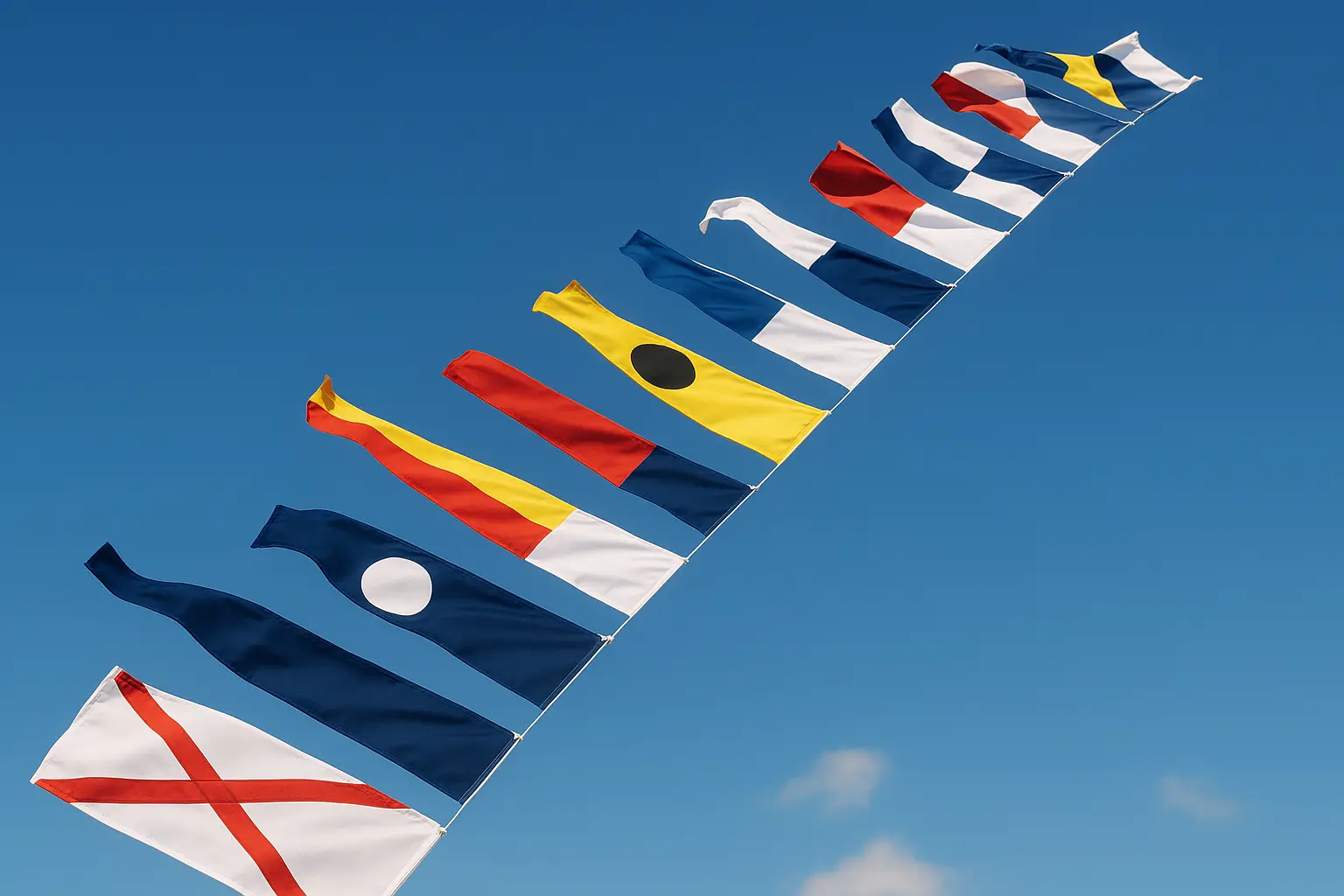The secret language of nautical flags what does a pennant say at sea?
The colorful flags on boats are part of an old signal system. At sea, without signs, they showed direction, safe distance, and that everything was okay.

The secret code of flags – Safety, tradition, and sailing culture
The language of nautical flags
In harbors or out at sea, you almost always see flags fluttering from the masts of boats. At first glance, these colorful signals may look decorative, but in reality they are much more: part of a communication system that has guided sailors for centuries. Where there are no traffic signs, no road markings, and sometimes no radio connection, a single flag can carry a life-saving message. It can signal that a diver is in the water, that a vessel is cleared to enter port, or even that there is an emergency and immediate help is needed.
How those the flag system work?
The signal flags used in sailing are based on the rules of the International Code of Signals (ICS). Each letter and number has its own flag, which can be used individually or in combination. A single flag on its own can already carry a message. We won’t go into the details here this is something we explain step by step in our training. There, you’ll learn everything you need for safe and confident sailing, including the correct use of these flags.
A short historical background
The history of flag signaling goes back to the 17th and 18th centuries, when naval and merchant ships communicated with each other on the open seas this way. At the time, visual signals were the safest and fastest means of transmitting important messages. In the 19th century, the standardized international system began to take shape, and it is still in use today. Even with modern technology radio, GPS, and satellite communication—signal flags remain an indispensable part of seafaring.
Why do we still use them today?
Although digital tools have taken over much of communication, signal flags still hold practical value today. If a ship loses power, the radio fails, or a quick and visually unmistakable message is needed, flags provide the solution. Their advantage is also that they are clearly visible from a distance, allowing nearby vessels to react immediately. But their importance is not only practical: flags also preserve the romance and tradition of seafaring.
Which flags should you know?
A sailor does not need to memorize every single signal flag, but knowing the most important ones is essential. The diver flag, the emergency combinations, and the flags related to docking are indispensable elements of safe navigation. These colorful signals may seem like small details, yet they carry enormous significance at sea.
Tradition and safety
The world of nautical flags is both practical and symbolic. Even alongside modern technology, they remain a reliable point of reference that can save lives in an emergency, while also preserving the traditions and romance of seafaring. For anyone who steps closer to the world of sailing, it quickly becomes clear: flags are not just pieces of fabric fluttering in the wind, they speak a secret language, the very code of the sea.
Many people wonder: is it still worth learning the language of flags in the age of modern technology? The answer is simple: yes. Radio, GPS, and satellite communication are incredibly helpful, but flags provide a safety backup that nothing else can replace. If the power goes out, if there is no radio connection, or if a quick and unmistakable visual signal is needed, the language of flags offers an immediate solution.
At the same time, flags are about more than just safety. They carry the romance of sailing, the centuries-old traditions of seafarers, and that unique feeling when a simple splash of color hides a clear and universal message. Anyone who learns to interpret them not only understands the rules better but also gets closer to the true culture of sailing. There is no right or wrong choice: some may learn only the most important signals, while others master the entire alphabet. What matters is knowing that the language of flags is part of the sea itself. For those who take sailing seriously, this knowledge is a foundation that brings safety, confidence, and a touch of romance to every voyage.
Here begins the freedom of sailing
The language of nautical flags is only one part of the knowledge that defines a confident captain. At Sidro Nautika, you’ll find everything you need not only to understand but also to apply the skills required for safe and assured sailing. Whether it’s a boating course, sailing training, or a motorboat license, we provide you with a solid foundation.
If it’s the call of the sea that inspires you, our Skipper C course is the answer. Held directly in Rijeka and Split, in a real maritime environment, this training gives you the certification to sail legally on any ocean or sea in the world. Looking for a faster option that covers both inland waters and coastal seas? With the ICC+B category, which you can obtain with us in as little as a single exam day, you’ll be ready to sail both on Lake Balaton and along the Croatian coast.
Our training portfolio also includes Yachtmaster A and Yachtmaster B courses, offering complete maritime navigation education. And with Sidro Nautika, you’ll always know where you stand: our pricing is fully transparent, so there are no surprises.
It’s no coincidence that hundreds of positive Google reviews prove the same: countless students have successfully earned their boating licenses with us. If you’re serious about sailing, you’ll find at Sidro Nautika all the knowledge, experience, and hands-on support you need from the Skipper C exam to the highest-level Yachtmaster training.
👉 Check out the detailed courses here: